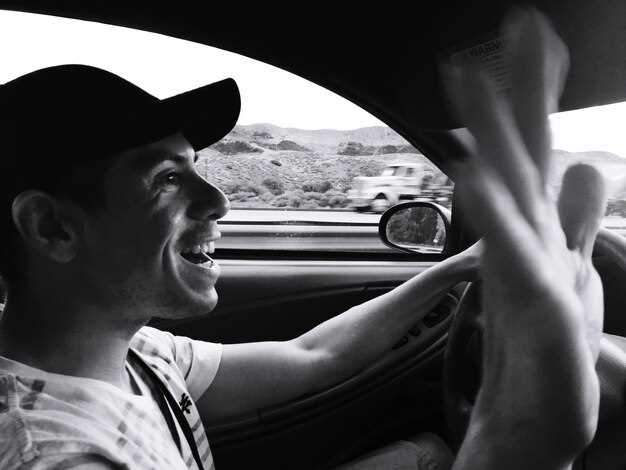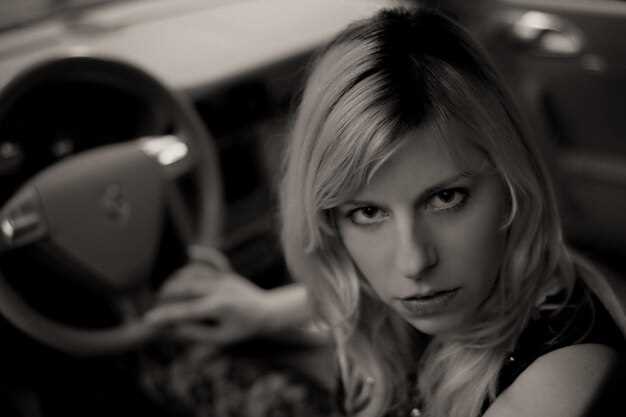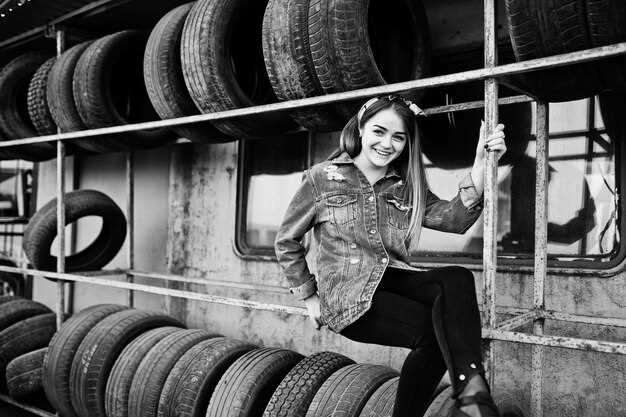
Capturing the raw power and aesthetic appeal of muscle cars requires a combination of technical skill and artistic vision. These iconic vehicles boast a blend of performance and style that demands attention, and your photography should reflect that. Whether you are a seasoned photographer or just starting out, understanding the nuances of shooting cars will enhance your ability to create striking images.
One of the key elements in muscle car photography is the use of natural light. The golden hour, shortly after sunrise or before sunset, offers a flattering soft light that highlights the car’s curves and details. Experimenting with different angles and perspectives allows you to showcase the unique features that make each muscle car special. By taking advantage of reflections and shadows, you can add depth and drama to your shots.
In addition to lighting, composition plays a vital role in your photography. Consider the background and surroundings to ensure they complement the car rather than distract from it. Using techniques such as leading lines or the rule of thirds can guide the viewer’s eye to the muscle car, making it the focal point of the image. With careful planning and attention to detail, you can elevate your photography and truly capture the essence of these powerful machines.
Choosing the Right Location for Muscle Car Shots
Selecting the ideal location is crucial for capturing stunning muscle car photography. The right backdrop can enhance the car’s aggressive lines and classic styling, making your images more compelling and visually appealing.
First, consider urban environments. Back alleys, industrial districts, and urban streets can provide an edgy contrast to the sleek design of a muscle car. Look for graffiti walls, abandoned buildings, or unique architectural elements that add character to your shots.
Next, natural settings offer a contrasting aesthetic. Picturesque landscapes, open roads, and scenic overlooks allow the car to shine against nature’s beauty. National parks or rural roads can serve as magnificent backdrops, emphasizing the car’s power and freedom.
If you’re aiming for a vintage feel, classic diners, gas stations, or retro motels can set the scene perfectly. These locations embody the nostalgia often associated with muscle cars, creating a harmonious blend of car and environment.
Moreover, consider the time of day. Golden hour, shortly after sunrise or before sunset, provides soft, diffused lighting that enhances the curves and colors of the car while reducing harsh shadows. The warm glow during this time creates an inviting atmosphere in your photography.
Lastly, ensure that your chosen location is easily accessible and safe. Checking local regulations about photography in public spaces is vital to avoid any issues. By carefully selecting your environment, you can ensure that it complements the muscle car and elevates your photography to the next level.
Utilizing Natural Light for Dramatic Effects
Capturing stunning muscle car photography relies heavily on the effective use of natural light. Here are some strategies to harness sunlight for creating dramatic effects:
- Golden Hour Magic: Photograph during the golden hour, shortly after sunrise or before sunset. The soft, warm light enhances the car’s features and adds depth to the images.
- Experiment with Shadows: Utilize shadows cast by the car to create interesting patterns. Position the car under overhead structures or nearby trees to play with light and shadow contrasts.
- Backlighting Effects: Position the car so that the sun is behind it, creating a halo effect around the edges. This technique enhances the car’s silhouette and adds a dramatic touch to the composition.
- Reflective Surfaces: Look for reflective surfaces like water or glass to create stunning reflections of the car. Early morning dew or puddles can add an extra dimension to your photography.
- Adjusting Angles: Change your shooting angle to capture the light hitting different parts of the car. A low angle can accentuate the muscle car’s aggressive stance while highlighting its curves.
- Cloudy Days: Utilize overcast skies for soft, diffused light. This type of lighting can minimize harsh reflections and produce even tones, emphasizing the car’s details.
By carefully considering the time of day and the quality of light, you can elevate your muscle car photography to new heights, creating images that evoke emotion and capture the essence of these powerful vehicles.
Angle Techniques to Highlight Muscle Car Designs

When it comes to photography, the angle from which you capture a muscle car can dramatically influence the overall impact of the image. To truly showcase the powerful lines and aggressive stance that define muscle cars, consider experimenting with various angles.
One effective technique is the low-angle shot. Positioning your camera closer to the ground can accentuate the car’s muscular body and create a sense of dominance. This perspective often makes the car appear larger than life, emphasizing its bold design and aggressive attitude. The low angle also allows for dramatic sky backgrounds, enhancing the composition.
Another approach is the three-quarter angle, which captures the front and side of the vehicle simultaneously. This angle is ideal for highlighting the contours and curves of the muscle car, showcasing its aerodynamic design and detailing. It provides an engaging view that showcases the vehicle’s personality and can attract attention to particular features like the grille or the side profile.
Additionally, consider the rear three-quarter angle. This perspective not only reveals the muscular rear of the car but also adds depth to the photograph with perspective lines that draw the viewer’s eyes towards the vehicle. This angle is particularly effective for capturing the stance and width of muscle cars, making them appear even more powerful.
Finally, don’t forget about the overhead shot. This angle offers a unique view that can emphasize the paint job and intricate details of the car’s rooftop and hatch. It can also effectively capture the relationship between the car and its surroundings, ideal for showcasing muscle cars in larger environments such as car shows or open roads.
By strategically selecting angles that highlight the distinctive features of muscle cars, photographers can create compelling images that reflect the raw power and artistry of these iconic vehicles.
Incorporating Motion for Dynamic Imagery
To elevate your muscle photography, incorporating motion can create stunning and dynamic images that capture the essence of power and speed. Here are some techniques to consider:
- Panning Technique: This involves moving the camera in sync with the subject as it moves. This technique keeps the muscle car sharp while blurring the background, emphasizing its speed.
- Long Exposure: Use a slower shutter speed to capture motion blur. This can be particularly effective at night, where the lights from the car create trails, giving a sense of movement and energy.
- Action Shots: Capture moments of acceleration or drifting. Position yourself at an angle where you can photograph the car as it moves, allowing the viewer to feel the rush of power.
- Static vs. Motion: Combine static images with motion by placing the muscle car in a dynamic environment, such as a racing scene. This contrast can emphasize the performance aspect of the vehicle.
- Creative Angles: Experiment with lower angles and oblique perspectives. This can enhance the feeling of speed and give a more aggressive stance to the muscle car.
By integrating these motions into your photography, you can create compelling and dynamic images that showcase the muscle car’s character and performance.
Post-Processing Techniques for Enhanced Visuals
Post-processing is a crucial step in muscle car photography that can significantly enhance the quality and appeal of your images. Proper editing techniques enable you to highlight the car’s features, boost colors, and create an overall compelling narrative. Here are essential post-processing techniques to consider:
| Technique | Description |
|---|---|
| Color Correction | Adjust the color balance to ensure that the car’s paint tone is accurately represented. Use tools like saturation and vibrancy to make the colors pop without appearing unnatural. |
| Contrast Adjustment | Enhance the contrast between the car and its background. This helps in making the subject stand out, drawing attention directly to the muscle car. |
| Sharpening | Apply sharpening to emphasize details, particularly in chrome accents, wheel rims, and engine components. However, be cautious to avoid artifacts. |
| Noise Reduction | Use noise reduction techniques to eliminate graininess that can occur in low-light settings. This ensures a cleaner final image, focusing on the car’s design. |
| Vignetting | Add subtle vignetting to darken the edges of the photo. This technique draws the viewer’s eye toward the center, where the car is located, enhancing the overall impact. |
| Cropping and Straightening | Crop the image to eliminate distractions from the frame, focusing on the car itself. Straightening the horizon ensures the image feels balanced and polished. |
Each of these techniques contributes to a more polished final image, allowing the muscle car to shine in its full glory. Experiment with these methods in your post-processing workflow to achieve stunning automotive photography results.
Understanding Camera Settings for Optimal Results

To achieve stunning muscle car photography, it is essential to have a solid grasp of your camera settings. Mastering these settings allows you to capture the essence of these powerful vehicles in a way that highlights their design and performance.
One of the most crucial camera settings is aperture. A wide aperture (small f-number) creates a shallow depth of field, blurring the background and making the muscle car stand out. This technique is particularly effective in isolating the vehicle against a busy backdrop, drawing the viewer’s attention where it belongs.
Shutter speed is another key factor. When photographing a muscle car in motion, a fast shutter speed is necessary to freeze the action and prevent motion blur. Conversely, for dynamic shots that convey speed, consider using a slower shutter speed to achieve a panning effect. This technique captures the motion of the car while keeping it sharp, enhancing the sense of speed.
ISO settings also play a significant role in muscle car photography. A higher ISO can be beneficial in low-light situations but may introduce noise. Strive to find a balance that maintains image clarity while allowing for adequate exposure. In bright conditions, a lower ISO will prevent overexposure and preserve detail.
Additionally, white balance is critical for achieving accurate colors in your photos. Adjusting the white balance according to your shooting environment ensures that the colors of the muscle car appear true to life, whether under the warm glow of a sunset or the cool tones of overcast skies.
Lastly, consider utilizing manual mode to fine-tune your camera settings for each shot. This level of control allows you to experiment and achieve the artistic effect you desire, whether it’s capturing the gleam of the car’s paint or the intricate details of its design. Understanding and adjusting these camera settings will significantly enhance your muscle car photography, leading to striking and memorable images.




